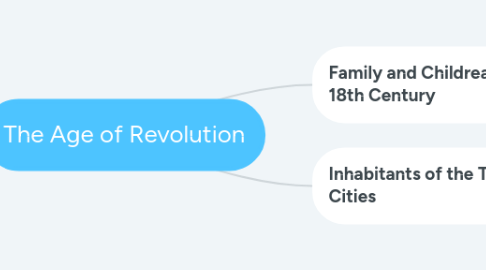
1. Family and Childrearing in the 18th Century
1.1. 18th century views on family
1.1.1. father’s role, other than dominating the family, was to select partners of their children based on the interests of the family.
1.2. prevailing attitudes in childcare
1.2.1. Some prevailing attitudes and practices in child care were:
1.2.1.1. breast feeding (lower class women),
1.2.1.2. abstaining from sex while breast feeding (as to avoid another immediate pregnancy)
1.2.1.3. low class women serving as wet nurses for high-class children
1.2.1.4. High class women considered the act of breastfeeding as undignified and so the lower class women were brought in as wet nurses
1.2.1.5. this practice was common for anyone who could afford it and was widespread in the 18th century
1.2.1.6. Late into the 18th century, when birth and survival rates of babies were rising
1.2.2. Childhood was now a phase in human development
1.2.2.1. changes that ensued
1.2.2.1.1. the dressing of children in more comfortable clothes appropriate for their age instead of clothes for adult styles
1.2.2.1.2. bringing breastfeeding back into style (for everyone),
1.2.2.1.3. games designed specifically for children were developed.
1.3. primogeniture
1.3.1. the practice of treating the first son as the favorite
1.3.2. this practice was on a rapid decline as the value that all children should be loved equally rose in popularity.
1.4. infanticide practiced
1.4.1. Infanticide was practiced when children were too big of a burden for their families to raise
1.4.1.1. in times of economic crises
1.4.2. solution that these troubled families practiced was the act of abandoning children
1.4.2.1. so widespread that a law that forbade parents from sleeping with children under the age of 5 was placed into action after a string of baby suffocations
1.4.3. Abandoning children was more commonly practiced as the largest charity-hospital in Russia was taking in an average of 5000 children a year whilst caring for 25000 children at a time
1.4.3.1. Mortality rates for these abandoned children ranged from 50 - 90%.
1.5. marriage and childrearing decisions were made by most people in the 18th century
1.5.1. New couple’s houses often had no connection to their parent’s housing
1.5.2. to accommodate for the housing prices they had to pay without familial support
1.5.2.1. men and women married in their late twenties or early thirties
1.5.3. The decision of when to marry impacted family planning
1.5.3.1. Usually the first child popped out at 1 year of marriage and other children 2-3 years after
1.5.4. the government saw this problem and raised it a birth-control law
1.5.4.1. limiting the number of children a family could have (as it was normally 5)
1.6. role did women and children play in the economy of the 18th century
1.6.1. Their roles were to help in the handicraft manufacturing done in home
1.6.2. In rural areas, children worded the land or helped in the cottage industry
1.6.3. Women grew vegetables in small plots, tended livestock, and sold eggs, vegetables, and milk
1.6.4. Wives of landless farmers worked the fields or worked in the textile industry
1.6.5. Wives of artisans helped their husbands at their crafts or as seamstresses
1.6.6. Wives of unskilled workers worked as laundresses and cleaners for the rich or as food peddlers / clothing peddlers
